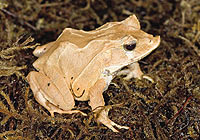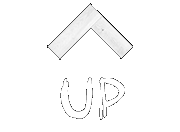Solomon Island leaf frog
Ceratobatrachus guentheri
Order: Anura
Family: Ranidae
Genus: Ceratobatrachus
This very interesting terrestrial frog is also known as the Solomon Island eyelash frog and the triangle frog. This species is polymorphic, meaning there are many different colour variations, from gold to earthy browns, to green in colour. The head is triangular in shape (hence the alternate name of “triangle frog”) and the projections over the eyes lead to the other name of “Solomon Island eyelash frog”. They reach a size up to 7.6 cm.
Conservation Status: IUCN
Distribution
They are found in the Solomon Islands and Papua New Guinea, Buka Island and Bougainville Island. The Solomon Islands lie east of Papua New Guinea and cover more than 1.35 million square kilometres of the South Pacific and consist of a double chain of 922 islands. They have the highest diversity of terrestrial vertebrate species of all Pacific Island nations, with the exception of Papua New Guinea.
Habitat
The Solomon Island leaf frog lives in the rainforests of tropical lowland and montane forests, where there is little standing water. The climate is tropical and sub-tropical, with moist broadleaf forests. It is a forest floor dweller, in leaf litter, although it has been found up to 700 m above sea level. It is also able to tolerate a wide range of habitats, and so it can live in secondary forest, rural gardens, and other degraded areas.
Diet
Insects and small vertebrates including small frogs. This frog has a “sit and wait” feeding technique – it will lunge at prey and swallow it whole.
Reproduction
These frogs are one of the few species that do not undergo metamorphosis outside the egg - there is no tadpole phase. The female buries eggs in small hollows at the base of trees. The pea sized eggs, which have a clear outer gel, hatch in one month as fully developed baby frogs about 0.6cm long. The eggs are transparent enough that you can see the developing frog in the egg. They appear to breed on and off all year.
Adaptation
Camouflage: Their pointed snout, projections over eyes and ridged veins over back and earthy brown colours give the appearance of a leaf allowing them to wait for their prey while being camouflaged from predators. They have a loud bark-like call to mark territory and find mates. They are nocturnal.
Threats to Survival
The population is stable and abundant as they adapt to a wide range of habitats. They have been exported in large numbers, especially to Europe for the pet trade. The Solomon Islands government is formulating legislation to control export of this frog. Habitat loss is a threat, as large areas of the naturally limited natural forest below 400 m have been logged, or are planned to be logged or cleared for subsistence agriculture. Human population growth is high, creating pressures to clear land.















